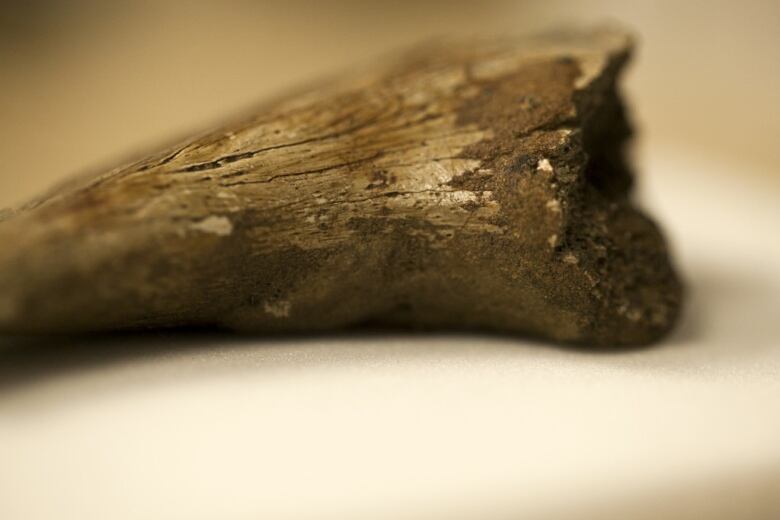Dinosaur blood cells, proteins found in crummy Alberta fossils
Soft tissues usually only found in very well-preserved fossils

Scientists have found a surprise inside badly preserved fragments of dinosaur fossils from Alberta tiny features that look like blood cells and a stringy protein called collagen.
That's surprising because fossils usually preserve only harder materials like bone, and typically only the best-preserved fossils contain softer tissues. Those softer tissues can provide valuable information that bones alone can't.
"What is particularly exciting about our study is that we have discovered structures reminiscent of blood cells and collagen fibres in scrappy, poorly preserved fossils," said Susannah Maidment, a co-author of the study, in a statement. "This suggests that this sort of soft tissue preservation might be widespread in fossils."

Maidment, a junior research fellow in earth sciences and engineering at Imperial College London, suggested that soft tissues might help scientists understand how different dinosaurs were related and how they evolved to become warm-blooded, as many scientists think a lot of dinosaurs were.
The researchers, led by Sergio Bertazzo, a junior research fellow in materials at Imperial College London, examined eight chunks of fossils in the collection of the Natural History Museum in London. Six of them were from Dinosaur Park Formation in Alberta, including the claw of a theropod (a carnivore related to T. rex), a chasmosaurus rib, hadrosaur toe and ankle bones, and the toe bone of a horned dinosaur, and the rib of a dinosaur that couldn't be identified. Two other hadrosaurfragments were from other rock formations that were also from the late Cretaceous, around 75 million years ago.
'Surprisingly similar' to emu blood
Using an electron microscope, they found red blood cell-like structures in the therapod claw and the horned dinosaur toe. When they used an instrument called a mass spectrometer to look at the chemical composition, they saw a profile "surprisingly similar" to that of blood cells from an emu, a large bird, they reported in the journal Nature Communications. Birds are thought to be closely related to dinosaurs.
In four of the other fossils, the researchers found fibre-like structures. The rib from the dinosaur that couldn't be identified even showed bands in the fibres that are seen in fresh collagen. The researchers also detected amino acids the building blocks of proteins that are normally found in collagen.

The researchers cautioned that more research is needed to confirm that what they saw is actually what they think it is. They also plan to examine more fossils to look for similar structures.
Robert Reisz, a University of Toronto paleontologist who was not involved in thenew paper, said in an email that the researchers' findings look reasonable.
"There is no reason to think that this kind of preservation is not real," said Reisz, who was part of a team that found preserved soft tissuesinmuch older dinosaurs in 2013.
Reisz added that clear evidence of proteins have previously been found indinosaurand reptile fossilsfrom the Cretaceous. A 2013 study suggested that proteins in dinosaur fossils are preserved by iron released from blood cells after a dinosaur dies.












_(720p).jpg)


 OFFICIAL HD MUSIC VIDEO.jpg)
.jpg)



























































































